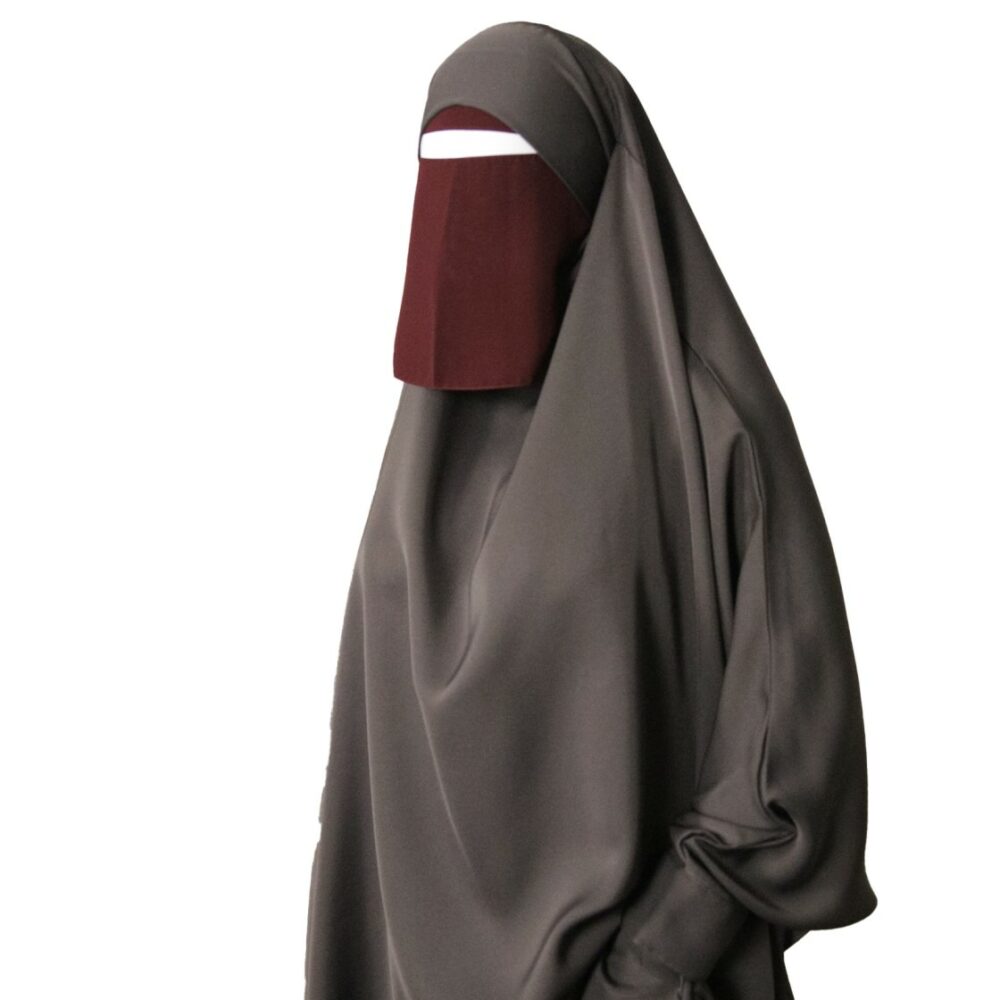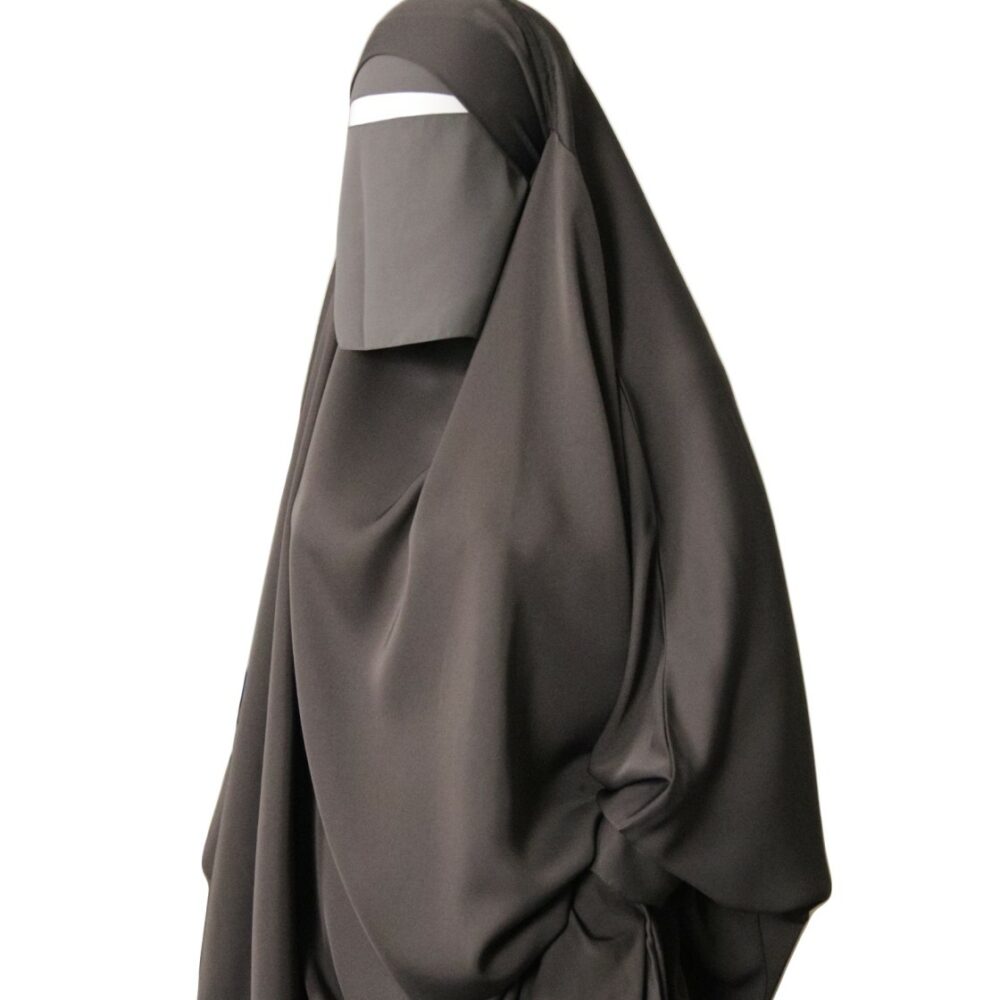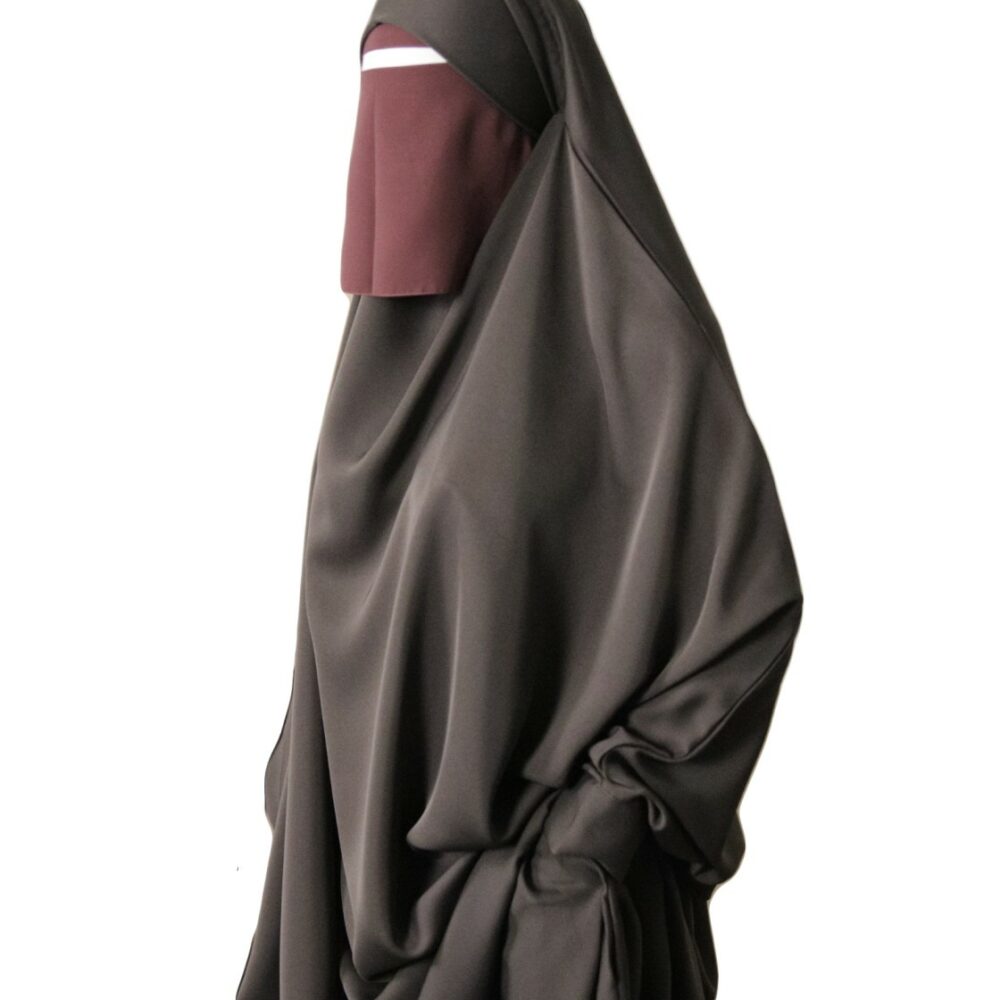Importance of Hijab in Islam
Is the hijab and niqab obligatory in Islam?
This is a question that Muslims and non-Muslims alike may find themselves wondering.
In this post, we will discuss the importance of the hijab in Islam, in light of the Quran and Sunnah. We will also take a look at what scholars have said regarding the topic of niqab.
Lets dive right in.
Looking to buy niqab or hijab? Make sure to browse our collection of Niqabs, Jilbabs, and Prayer Garments for Muslim women.
MUHAMMAD IBN SIREEN:
"Indeed this knowledge is Religion, so a man must look from who he is taking his Religion.”
Contents
Chapter 1
What is hijab and Is the hijab compulsory?
CHAPTER 2
Niqab Meaning and is the niqab an obligation
CHAPTER 3
Conclusion
CHAPTER 1: What is Hijab and is the Hijab mandatory?
The hijab [pronounced as hee·jaab] is an obligation on the Muslim woman. Below we will provide evidence from the Quran and Sunnah on the topic of the importance of the hijab.
Allaah says in the Quran, “O Prophet! Tell your wives and your daughters and the women of the believers to draw their cloaks (veils) all over their bodies (i.e. screen themselves completely except the eyes or one eye to see the way). That will be better, that they should be known (as free respectable women) so as not to be annoyed. And Allah is Ever Oft-Forgiving, Most Merciful.”
Surah Ahzaab, Ayah 59
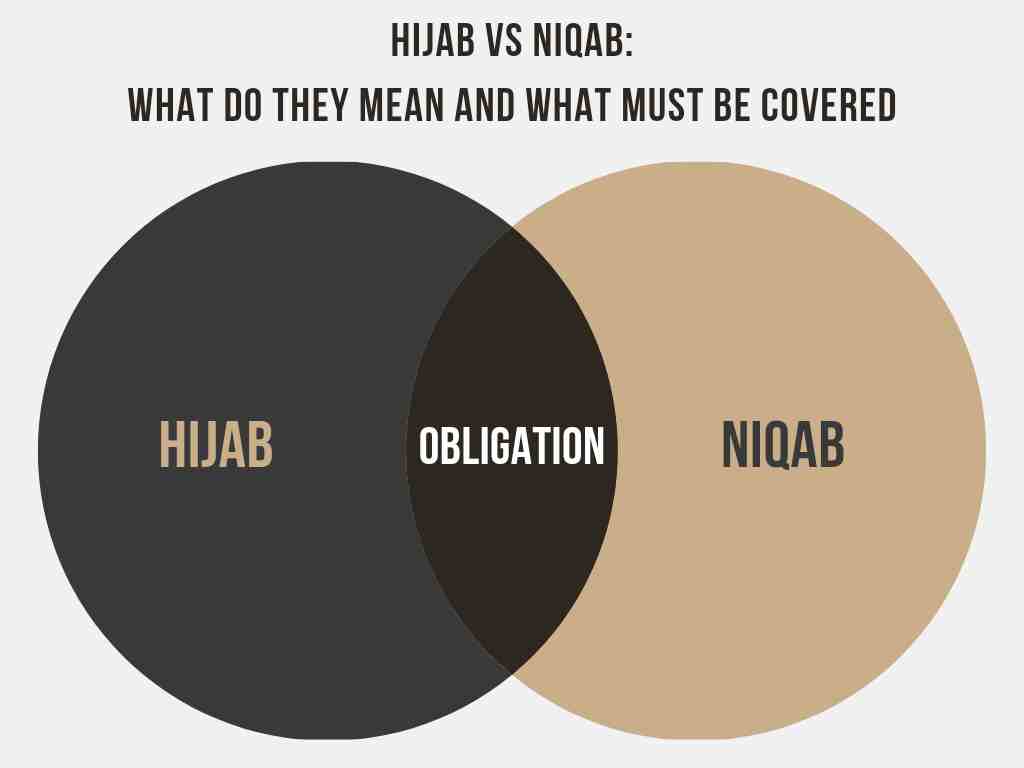
“And tell the believing women to lower their gaze (from looking at forbidden things), and protect their private parts (from illegal sexual acts) and not to show off their adornment except only that which is apparent (like both eyes for necessity to see the way, or outer palms of hands or one eye or dress like veil, gloves, head-cover, apron, etc.), and to draw their veils all over Juyubihinna (i.e. their bodies, faces, necks and bosoms) and not to reveal their adornment except to their husbands, or their fathers, or their husband's fathers, or their sons, or their husband's sons, or their brothers or their brother's sons, or their sister's sons, or their (Muslim) women (i.e. their sisters in Islam), or the (female) slaves whom their right hands possess, or old male servants who lack vigour, or small children who have no sense of feminine sex. And let them not stamp their feet so as to reveal what they hide of their adornment. And all of you beg Allah to forgive you all, O believers, that you may be successful.”
Surah Noor, Ayah 31

CHAPTER 2: The Meaning of Niqab and Is Niqab Obligatory?
The niqab [pronounciation: nee·qaab] is a piece of cloth that covers the face leaving only the eyes or one eye to see.
The topic of the niqab is one which the scholars have differed over. Some scholars holding it to be waajib (obligatory), and some scholars holding it to be highly recommended. Below, we will provide a few of the evidences the scholars have used to support their view. These evidences are from the Quran and Sunnah. Important to note, we have not included all the proofs. For a complete list of the proofs, please refer to the book “Four Essays on the Obligation of Veiling”.
Opinion 1: It Is Obligatory to Cover the Face and Hands
Proof 1:
- Regarding the statement of Allaah: “And to draw their khimaars (veils) over their juyoob” The khimaar is that which a woman uses to cover and veil her head, such as a head cloth. So if she was commanded to place the khimaar over her jayb (bosom), then she was also commanded with covering her face, whether it is because wearing the khimaar necessitates that or because it is understood from general reasoning. This is since if covering the neck and bosom are obligatory, then veiling the face is an obligation for all the more reason, since it is the source of beauty and enticement. Indeed, when people seek the beauty of a figure, they do not ask except concerning the face. If it is beautiful, they do not look towards anything else in the same manner as possessing importance. This is why when it is said such and such woman is beautiful, one doesn’t understand from these words anything except the beauty of the face. So it is clear that the face is the place of beauty that is asked about and informed of. And if it is this way, then how can we come to understand that this Religion, which is based upon wisdom, would obligate the covering of the neck and chest and then allow the exposure of the face?
- The statement of Allaah: “…and let them not stamp their feet, so as to reveal what they hide from their adornment.” This means that a woman must not strike her foot so as to let it be known what she conceals (from her adornment), such as her ankle bracelets or anything else that she adorns herself with for a man. So if a woman is forbidden (in this ayah) from stamping her feet, for fear of causing fitnah for a man, due to what he hears from the sound of her ankle-bracelet or its types, then how about exposing the face? Which of the two is a greater cause for fitnah? That the man hears the sound of the ankle-bracelet produced by the foot of a woman, not knowing who she is, nor her beauty nor if she is young or old or if she is unattractive or beautiful. Which of these two is a greater fitnah? This, or that he looks at a woman’s uncovered face that is perhaps beautiful, fair, young, bright, enticing, and which is perhaps beautified with that which attracts fitnah (temptation) and calls for the prohibited look? Indeed, every man that has an interest in women knows which of the two is a greater fitnah and which is more deserving of being covered and concealed.

Proof 2:
- Allaah’s statement: “O Prophet! Tell your wives and your daughters and the believing women to cast their jalaabeeb (pl. of jilbaab) upon themselves (i.e. their bodies). That will be better, that they should be known so as not to be bothered. And Allaah is Ever Oft-Forgiving, Most Merciful.” [Surah Al-Ahzaab: 59]
- Ibn ‘Abbaas said about this ayah: “Allaah commanded the believing women that when they come out of their homes for a necessity, they cover their faces from the top of their heads (downwards), with jilbaabs, and that they expose (only) one eye.” The interpretation (tafseer) of this Companion is a decisive proof, even to the point that some scholars say this statement takes on the ruling of being marfoo’ (raised) to a saying of the Prophet.
- Concerning the statement of Ibn ‘Abbaas “…and that they expose (only) one eye”, then that was only permitted for the necessity of seeing the road. And if there is no need for that, then uncovering the eye is unnecessary. The jilbaab is a loose outer garment that goes over the khimaar, similar to the ‘abaaya (wide cloak). When this ayah (33:59) was revealed, Umm Salamah (radyAllaahu ‘anhaa) said: “The Ansaaree women came out of their homes, walking as if they had crows upon their heads due to the tranquility, and they were dressed in black garments.” Abu ‘Ubaydah As-Salmaanee and others mentioned that: “The believing women used to cast their jilbaabs from (over) the top of their heads downward, to the point that nothing was visible except their eyes, for the purpose of seeing the road.”

Proof 3:
- Ibn ‘Umar reported that the Prophet said: “Whoever trails his garment out of pride, Allaah will not look at him on the Day of Judgement.” So Umm Salamah (radyAllaahu ‘anhaa) asked: “Then what should the women do with the hems of their dresses?” The Prophet said: “Let them extend their hems the length of a hand span.” She said: “But their feet would still be exposed.” So he replied: “Then let them extend it a forearm’s length and no more.” [Reported by Abu Dawood] There is evidence in this hadeeth that a woman is obligated to cover her feet. This was a well-known matter amongst the Sahaabiyaat. Without a doubt, the foot is less a place of fitnah than the face and hands. Thus, warning against something that is a lesser danger also consists of a warning against what is greater and superior than it, based on the wisdom of the Last Revelation. Would it obligate the covering of an area that is less a place of fitnah, and allow the exposing of that which is a greater area of fitnah? Indeed this is a clear contradiction that is not possible for the wisdom of Allaah and His Legislation.
Proof 4:
- ‘Aa’ishah (radyAllaahu ‘anhaa) said: “Male riders would pass by us while we (wives) were in the state of Ihraam with the Messenger of Allaah. When they would approach us, (each) one of us would let her jilbaab fall down from (the top of) her head over her face. And when they had passed on, we would uncover our faces.” [Reported by Ahmad, Abu Dawood and Ibn Maajah] In her statement: “When they (male riders) would approach us, (each) one of us would let her jilbaab fall down from her head over her face” is a proof for the obligation of covering the face. This is because when one is in the state of Ihraam, it is obligatory to uncover the face. So if it were not for the strong restriction against exposing the face, it would have been obligatory for them (i.e. the Prophet’s wives) to remain uncovered, even in the presence of the male riders. To clarify this point further: Uncovering the face in the state of Ihraam is obligatory on all women, according to a majority of the scholars. And the obligatory act does not get overridden, except by something else that is obligatory. Therefore, if observing the Hijaab and veiling the face in front of male-strangers were not obligatory, it would not have been permitted for the Prophet’s wives to abandon the obligatory act of exposing the face in the state of Ihraam. Furthermore, it has been confirmed in the two Saheeh Collections and elsehwere that a woman in the state of Ihraam is forbidden from wearing a niqaab (face-veil) and gloves.
Opinion 2: It Is Permissible to Uncover the Face and the Hands
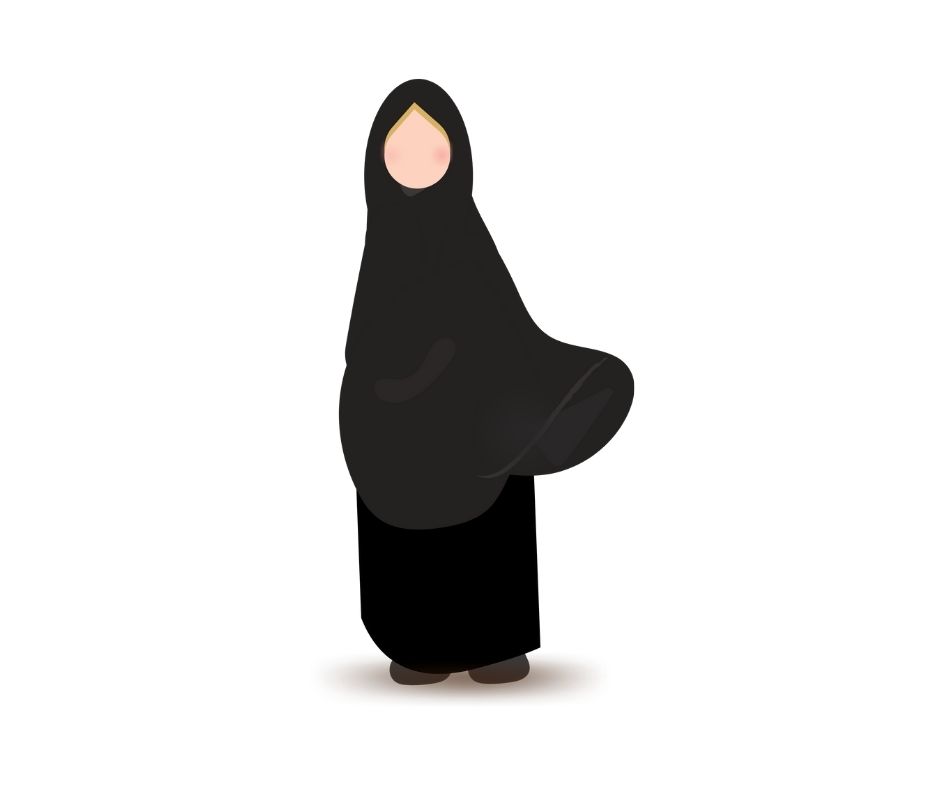
Proof 1:
- The statement of Allaah, the Most High: “And (tell them) to not display their adornment (zeenah) except for that which is apparent from it.” [Surah An-Noor: 31] Al-A’mash reported from Sa’eed bin Jubair, that Ibn ‘Abbaas said about this ayah: “It means her face, hands and ring.” The interpretation of this Companion is evidence, as has been mentioned previously.
Proof 2:
- Abu Dawood reported in his Sunan from ‘Aa’ishah (radyAllaahu ‘anhaa) that she said: “Asmaa bint Abee Bakr entered in the presence of Allaah’s Messenger whilst wearing a thin, transparent garment. So the Messenger of Allaah turned away from her saying: ‘O Asmaa! Indeed when a woman reaches the age of puberty, it is not allowed that any of her be seen except for this and this.’ And he pointed to his face and hands.”
Proof 3:
- Al-Bukhaaree and others reported from Ibn ‘Abbaas that: “His brother AlFadl once rode behind Allaah’s Messenger during the farewell pilgrimage when a woman from the tribe of Khatha’am came to him. Al-Fadl began to look at the woman and she too began to look at him. So the Prophet grasped Al-Fadl’s chin and turned his face towards another direction.”
- “Ibn Qudāmah Al-Maqdisi (rahimahullāh) stated in Al-Mughni (1/637) regarding the prohibition of the woman in ihrām wearing the niqāb and gloves: “If the face and hands were ‘awrah, it would not have been prohibited to cover them. And also due to the fact that there is a need for the face to be uncovered when buying and selling, and the hands uncovered for giving and taking.” Ibn Qudāmah also depended on this view and was firm upon it in his book Al-‘Umdah (p. 66).” Read more on that here – “Al-Albani on the Niqab of the Muslim woman, whether it is wajib or not.”

Proof 4:
- Al-Bukhaaree and others reported from Jaabir bin ‘Abdillaah that he said concerning the Prophet’s praying with the people during ‘Eid: “He then admonished the people and gave them the reminder. Then he moved on further until he came to the women, so he admonished them and gave them the reminder. And he said: ‘O assembly of women, give in charity! For, indeed, most of you will be the wood that kindles the Hellfire.’ Thereupon, there arose from the middle of the female congregation, a woman with dark-brown cheeks, who said: ‘Why is that, O Messenger of Allaah?’ He replied: ‘Because you women take too many complaints and you refuse to acknowledge your husband’s good treatment.’ Upon hearing this, the women began tossing their jewelry as charity into Bilaal’s outspread cloth.” If it were not for her face being uncovered, it would not be known that she had dark-brown cheeks. This hadeeth has come to be one of the well-known evidences that support the claim that it is permissible for a woman to expose her face in front of male-strangers.
Chapter 3: Conclusion
To wrap things up, we would like to emphasize that this is a matter which the scholars of Ahlus Sunnah have differed on.
It is important that the Muslim researches the issue, and acts in accordance to what the proofs and evidences substantiate. And to be careful not to fall into picking and choosing the view that conforms to their desires. But rather, the view that appears to have the strongest evidence.
We hope that this article shed some light on the issue of the niqab and the importance of the hijab in Islam. Be sure to check out the linked resources for further reading.
If you’re looking for head coverings and modest wear for Muslim women, check out our wide range of hijab for women.
Resources
1. “Four Essays on the Obligation of Veiling” by the Esteemed Scholars ‘Abdul-Azeez bin Abdillaah bin Baaz, Muhammad bin Saalih al-Uthaimeen, Saalih bin Fawzaan bin Abdillaah al-Fawzaan, Zayd bin Muhammad bin Haadee al-Madkhalee, pgs. 29, 31, 33, 39-40, 46-47

